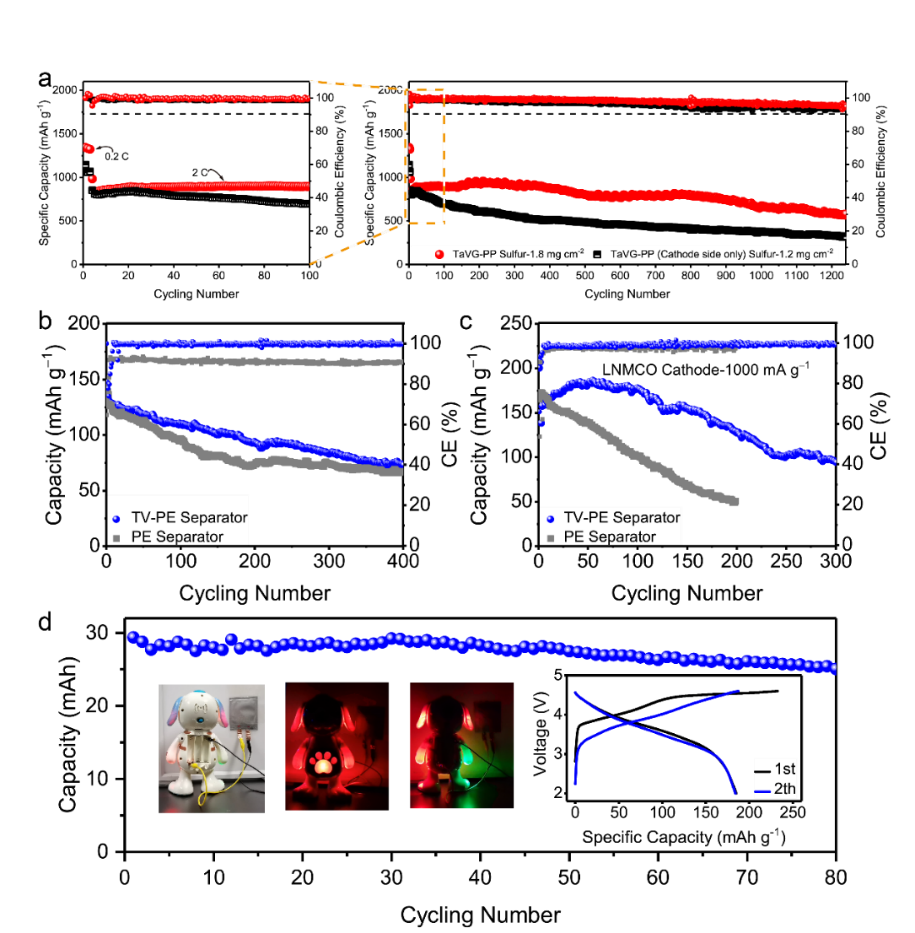Metallic lithium (Li) anode is considered as one of the most promising candidates for next generation high-energy density batteries. It is also strategically important to achieve the goal of disruptive battery technologies of 600 Wh kg-1 propelled by the 14th Five-Year Plan in China. In order to support this developing guideline, there are still many challenges for metal Li anode, especially the lithium dendrites and dead lithium obstacles which will cause electrochemical performances decay, short-circuit, potential thermal runaway, and even safety accidents. For battery systems, high energy lithium-sulfur batteries (LSBs) hold great potential for next generation battery system which could deliver 5-10 times higher energy density than current Lithium ion batteries (LIBs). However, sluggish sulfur conversion kinetics and severe polysulfides shuttle on the sulfur cathode, in addition with the chronic issues on the Li anode side plague the developing of advanced LSBs. Consequently, conquering the above-mentioned challenges by an all-in-one strategy becomes the core scientific topic and technologies for advanced lithium metal batteries (LMBs).

From an overall perspective for the working LMBs system, the electrochemical reaction and mass transfer whether desired or unsatisfactory ones all ignite and continue at the electrode interfaces. Moreover, separator is the bridge connecting two electrodes and related to all the chronic issues in both Li anode and sulfur cathode. In this context, separator modification is an efficient strategy to resolve the problems in LMBs. Moreover, considering the practicability of batteries, neither nonconductive, inactive and cost-increasing components nor elaborate manufacturing process should be introduced overmuch, even for simple separator engineering.

Recently, Prof. Xu’s group developed a composite separator by simply casting functional TV-layer on commercial polyolefin membrane to improve the Li+ transport behavior, modify SEI structure, and regulate the Li+ ion deposition, which result in dense cobblestone state rather than dendrites on the lithium terminal under long time cycling and high deposition capacity. Simultaneously, the functional layer facing the sulfur cathode shows targeted electrochemical catalysis towards sulfur species conversion. As a result, the designed separator enabled a dendrite-free Li anode for up to 6000 and 4200 h cycling for the TV-PP separator and TV-PE separator, respectively. The designed separator shows a wide compatibility in typical LMBs systems, not only achieving a high capacity of 3 mAh cm−2 after 150 cycles in LSBs, but also guaranteeing stable cycling performances in the full LIBs with commercial LFP and LMNCO-622 cathode. The soft-packaged thin batteries with the designed separator can stably cycle for 80 and 50 cycles with a LMNCO-622 and sulfur cathode, respectively. This separator engineering strategy solves the problems in LMBs from the perspective of electrochemical process initially at both lithium and sulfur cathode surface/interface. Additionally, the light weight (0.15 mg cm-2), mechanically stable (bearing up to 30 mAh cm-2 lithium deposition capacity without battery failure) and thermal tolerance (suffering 130 oC for 11 h without obvious thermal shrinkage) properties of the designed separator shows a wide practical application potential in future LMBs.


